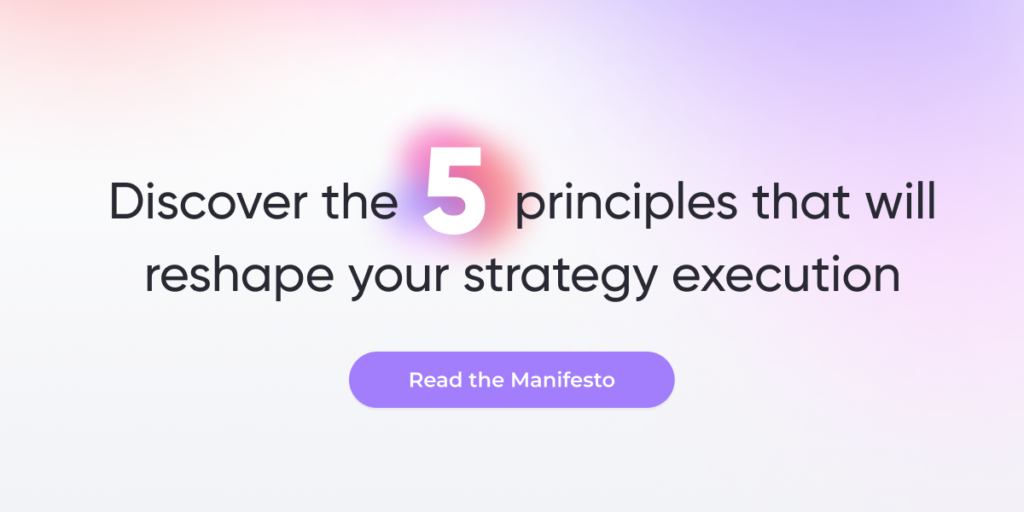HR transformation is reshaping how organizations align people, processes, and technology to achieve operational excellence and deliver greater business value. With talent becoming a key driver of competitive advantage, this strategic evolution now includes orchestrating meaningful employee experiences as a critical component.
Today’s HR leaders integrate workforce orchestration with traditional transformation practices to ensure every strategic initiative is effectively executed across the organization. By strategically aligning HR initiatives with business goals, organizations can create significant impact and drive success for all stakeholders.
Key Insights
- HR professionals must develop data analytics skills to transform the HR function from transactional to strategic.
- HR transformation projects succeed with detailed roadmaps, stakeholder engagement, and strong change communication.
- Forward-thinking HR departments use predictive analytics for workforce planning, positioning the HR function as a strategic business driver.
- Successful HR transformation balances organizational structure, technology improvements, and effective workforce orchestration.
- Effective talent acquisition and performance management systems require personalized, relevant communication delivered at the right moment.
- Organizations that integrate intelligent communication platforms into their HR transformation strategy see significantly higher employee engagement and strategic execution.
What is HR transformation?
HR transformation is the process of reimagining and restructuring the human resources function to make it more effective, agile, and strategically aligned with business goals. It involves evolving HR beyond its traditional focus on transactional tasks—such as payroll, benefits, and compliance—toward becoming a proactive, strategic partner within the organization. This shift prioritizes leveraging technology, optimizing processes, and aligning HR strategies with the changing needs of the workforce and the broader business environment.
By transforming HR into a more strategic function, organizations can enhance their ability to drive cultural shifts, improve employee experiences, and support long-term growth and operational excellence.

The objectives of HR transformation
Operational excellence
Operational excellence goes beyond automating routine tasks. By intelligently orchestrating HR communications, organizations deliver relevant, timely information, reducing noise, increasing clarity, and ensuring employees take informed action quickly.
Modern HR operating models also focus on streamlining HR processes, reducing administrative burdens, and enhancing service delivery. This includes automating routine tasks, implementing efficient HRIS systems, and adopting best practices to optimize HR operations.
Business alignment
Business alignment is crucial for ensuring that HR initiatives contribute to achieving the company’s strategic objectives. This includes integrating HR functions with the business strategy, ensuring that HR initiatives contribute to achieving the company’s strategic objectives. HR leaders must understand the business’s needs and tailor HR practices to support these goals.
Workforce orchestration enables HR leaders to activate HR initiatives aligned with strategic priorities, providing personalized, timely communication that empowers employees at every level to execute strategic objectives effectively.
Employee engagement
Modern employee engagement strategies can now leverage orchestrated employee journeys to ensure each employee feels valued and understood through targeted, personalized communication. By providing relevant content at critical moments, HR can significantly deepen employee commitment and productivity. Engaged employees are more productive, innovative, and committed to their work. HR strategies should focus on creating a positive employee experience, enhancing the employee value proposition, and implementing programs that drive employee engagement.
Talent management
HR transformation strategy involves modernizing talent management processes, such as recruitment, onboarding, performance management, and development. By leveraging advanced HR technology and data analytics, organizations can improve talent management and align it with strategic business needs.

Steps to successful HR transformation
HR transformation is more than just a shift in processes; it’s a strategic overhaul that aligns HR practices with business goals while adapting to workforce needs. Here’s how organizations can drive meaningful change through actionable steps:
1. Establish visionary leadership
Effective transformation starts with strong leadership. Today’s CHROs must go beyond traditional roles, acting as strategic advisors who align HR priorities with broader business goals.
Focus areas:
- Design adaptable HR strategies that respond to evolving business needs.
- Collaborate with leadership to embed HR insights into organizational strategy.
- Optimize HR budgets to balance financial discipline with innovation.
Action step: Empower CHROs to act as business leaders, equipping them with the tools and data they need to make informed, impactful decisions.
2. Define a modern HR operating model
A flexible HR operating model ensures the HR function and its HR processes can adapt to changing demands while staying aligned with business priorities.
Key components:
- Integrated systems: Use platforms that connect HR processes with core business functions.
- Agile workflows: Standardize processes while allowing for rapid adaptation.
- Service delivery innovation: Focus on efficiency without compromising personalization.
Action step: Develop an HR operating model that emphasizes integration, agility, and alignment with strategic goals.

3. Leverage advanced HR technology
From automation to AI, digital tools enable HR teams to streamline operations, deliver personalized experiences, and make data-driven decisions. Workforce orchestration platforms will become increasingly important, to deliver personalized, context-driven communications, empowering employees and streamlining HR processes to achieve maximum impact.
Technological focus:
- Automation and AI: Use AI-powered tools to automate tasks like candidate screening and employee support.
- Predictive analytics: Analyze HR data and workforce trends to anticipate challenges and opportunities.
- Intelligent personalization: Deliver tailored communications and services at the right time, improving engagement and satisfaction.
- Data integration: Implement systems that unify employee data for a comprehensive view of HR processes, from onboarding to retirement.
Action step: Invest in HR technology platforms that integrate AI, analytics, and automation to create a seamless and effective HR ecosystem.
4. Empower the HR team with future-proof skills
HR teams must be equipped to handle the challenges of an evolving workforce. This includes continuous learning and development, fostering a culture of innovation, and enhancing HR capabilities to address emerging workforce challenges.
Focus areas:
- Provide upskilling and reskilling opportunities.
- Encourage the adoption of digital tools and analytics.
- Cultivate a culture that values experimentation and adaptability.
Action step: Design a robust training program to build the skills HR teams need to thrive in a tech-enabled environment.
5. Embrace experimentation and flexibility
HR transformation requires the willingness to adapt and learn from setbacks. Encouraging a culture of experimentation ensures that HR remains agile and innovative.
Key principles:
- Experiment with new communication and technology solutions to engage employees effectively.
- Treat failures as learning opportunities to refine strategies.
- Stay responsive to employee feedback to ensure alignment with their needs.
Action step: Pilot new technologies and strategies on a small scale before rolling them out organization-wide.
6. Build and execute a transformation roadmap
A clear and actionable HR transformation roadmap is essential to ensure HR transformation initiatives stay on track and achieve measurable results.
Steps to success:
- Define measurable goals that align with organizational priorities.
- Identify milestones and timelines for accountability.
- Involve stakeholders to build trust and ensure buy-in.
Action step: Use workforce analytics to continuously evaluate progress, making adjustments as needed.
7. Implement effective change management
Effective change management now leverages orchestrated communication to ensure that every employee receives clear, timely, and personalized information about changes. This approach minimizes resistance, maximizes buy-in, and accelerates organizational transformation. Transformation is as much about people as it is about processes. Employing effective change management strategies ensures employees feel supported and engaged.
Core strategies:
- Communicate the vision and purpose of transformation clearly and consistently.
- Provide tailored training to help employees adapt to new tools and processes.
- Engage employees by involving them in the transformation process, gathering feedback, and addressing concerns.
Action step: Create a change management framework that emphasizes transparency and employee empowerment.
8. Leverage data for continuous improvement
Data is the foundation of informed decision-making and long-term success in HR transformation.
Data-driven focus:
- Monitor HR data, employee engagement, satisfaction, and performance metrics.
- Use predictive analytics to anticipate workforce trends and challenges.
- Continuously refine HR strategies and enhance HR capabilities based on insights from data.
Action step: Implement dashboards that provide real-time visibility into key HR metrics, enabling leaders to make proactive adjustments.
Boosted engagement
Role of CHROs in HR transformation
Strategic leadership
Effective HR leadership means going beyond traditional roles to drive business success across the enterprise. Specifically, top CHROs:
- Build and adapt HR strategies: Develop HR strategies that align with the business’s strategic objectives and adapt them as the business and operating environment change.
- Provide key inputs for business strategy: Actively participate in strategy development, ensuring that HR perspectives are included in decision-making processes.
- Position the HR function: Structure and staff the HR function to meet evolving business needs and optimize HR operations to support business goals.
- Optimize HR budgets: Ensure effective resource allocation, maintaining financial discipline while contributing to the organization’s overall vision and strategy.
Business strategy integration
Integrating HR strategies with strategy is critical for achieving alignment and driving organizational success. This involves:
- Understanding business needs: CHROs must have a deep understanding of the business’s strategic priorities and tailor HR practices to support these goals.
- Aligning HR functions: Ensuring that these functions and processes are aligned with the business strategy to support the achievement of business objectives.
- Contributing to strategic objectives: HR leaders should play an active role in shaping and supporting the company’s strategic direction.
Optimizing HR budgets
Effective CHROs know how to distribute HR leadership among their direct reports to create a future-focused, financially disciplined function. This involves:
- Resource allocation: Allocating resources efficiently to maximize the impact of HR initiatives.
- Financial discipline: Maintaining budgetary control while ensuring that HR activities support the overall business strategy.
- Supporting business goals: Ensuring that HR budgets are aligned with strategic business priorities.
Partnering with internal communications
Importance of internal communications
Enhancing HR transformation through internal communications is critical for ensuring that HR initiatives are effectively communicated and embraced by employees. The role of internal comms includes:
- Enhancing employee engagement: Internal communications play a vital role in driving engagement by keeping employees informed and connected.
- Supporting HR initiatives: Effective communication strategies ensure that HR initiatives are well-understood and supported across the organization.
- Building a strong culture: Internal comms help reinforce company culture and values, contributing to a positive employee experience.
HR transformation in practice: Lessons from Erika Migliaccio and top organizations
Erika Migliaccio, founder of Upstream HR Strategies, has over two decades of experience driving business results for multinational organizations. Drawing inspiration from Frances Frei’s Uncommon Service, Erika emphasizes treating employees like customers to deliver exceptional HR services. Her insights highlight actionable strategies for modernizing HR to meet today’s workforce demands.
- Segmenting and prioritizing services: By surveying employees to rank HR services by importance, Erika focuses resources on what truly matters.
- Building a tailored service model: She designs service models that excel in meeting key employee needs while deprioritizing less critical areas.
- Leveraging data for personalization: Using employee survey data and predictive modeling, Erika aligns HR services with employee expectations, delivering personalized, impactful solutions.
Integrating FirstUp’s’ “How We Do It” framework, Erika employs predictive modeling and engagement insights to create a unified view of employee attributes and behavior. This allows HR to design personalized campaigns and deliver content through preferred channels. She explains,
“We segment our customers, survey them to rank HR services by importance, and assess our performance in those areas. This helps us focus on what truly matters.”
From large multinational teams to dispersed frontline workers, companies across industries are implementing innovative solutions to drive HR transformation. Let’s explore how organizations like Toyota, Swissport, and Brightview Senior Living are putting these principles into action.
Toyota: Driving workforce inclusivity and engagement
With 375,000 employees worldwide, Toyota leveraged the “One Toyota” platform to connect its diverse workforce, including remote and production-floor employees. The platform provided seamless access to schedules, payslips, and cultural initiatives, embodying HR transformation through digital inclusivity and enhanced communication. Learn more.
Swissport: Unifying communication across a global workforce
Facing communication challenges across 45,000 employees in 300 airports, Swissport launched the “One Swissport” platform. This custom-branded app by Firstup consolidated disparate systems into a single communication hub, boosting employee engagement and operational consistency—an exemplary model of HR transformation through digital unification. Learn more.
Evergy: Frontline HR transformation during organizational change
Evergy, a utility company with a large field workforce, adopted a new communication platform to address challenges during a major merger. By ensuring timely information delivery and engagement, they improved communication across all employees, highlighting HR transformation’s role in navigating organizational restructuring. Learn more.
Brightview Senior Living: Connecting a dispersed workforce
Without company email addresses, Brightview Senior Living’s 4,600 associates faced significant communication barriers. By implementing “BVLink,” a Firstup platform, Brightview achieved a 93% registration rate in just one month, enabling vital information sharing during the pandemic and showcasing rapid, effective HR transformation. Learn more.
Phillips 66: Boosting engagement with personalized communication
Phillips 66 enhanced employee engagement by adopting Firstup’s “Engagement Boost” feature, powered by machine learning. This tool optimized content delivery times for their workforce, doubling engagement rates at key facilities and demonstrating HR transformation through advanced communication strategies. Learn more.
Trends and priorities in HR transformation
Managing economic and social volatility
The modern workplace is shaped by rapid change, from the aftershocks of global pandemics to the ongoing evolution of hybrid work models and geopolitical uncertainty. Future-focused CHROs must adopt proactive strategies to not only weather these changes but also thrive amid them.
- Reimagine hybrid work: Design forward-thinking strategies that not only accommodate but optimize hybrid work. This includes fostering collaboration across remote and in-person teams, maintaining organizational culture, and addressing the diverse needs of a distributed workforce.
- Prepare for global disruptions: Develop adaptive HR frameworks that enable quick responses to geopolitical, economic, and social shifts, ensuring stability in unpredictable environments.
- Prioritize organizational resilience: Build HR practices that anticipate future disruptions, integrating flexibility and scalability to support employees and operations during times of change.
HR transformation strategy for workforce planning
Strategic workforce planning is essential for businesses aiming to stay competitive in the face of emerging trends, evolving market demands, and effective management strategies. By leveraging future-focused strategies, HR leaders can align talent initiatives with organizational goals and secure a strong, adaptable workforce.
- Develop forward-looking talent strategies: Shift from addressing immediate hiring needs to creating comprehensive plans that anticipate future skill demands and workforce composition changes.
- Leverage workforce analytics for insight: Use advanced data tools to analyze labor market trends, employee performance, and industry benchmarks. This ensures HR leaders make informed decisions about hiring, retention, and upskilling.
- Anticipate emerging skills and roles: Stay ahead of workforce demands by identifying capabilities that will drive innovation and competitive advantage in the years to come. Develop targeted training programs and partnerships to cultivate these skills internally.
By focusing on these priorities, HR leaders can navigate uncertainty and position their organizations for sustained success, creating workplaces that are adaptable, resilient, and prepared to meet the challenges of the future.
Conclusion
The future of HR transformation involves leveraging advanced technology and workforce orchestration platforms that activate employee data for hyper-personalized experiences. By aligning HR strategies with business goals and fostering a culture of continuous improvement, organizations can drive significant business outcomes such as increased productivity, improved employee engagement, and higher retention rates.
How Journey Mapping Can Guide Your Employee Experience
Learn how to make each stage of the employee journey more positive and productive
FAQs
HR transformation refers to the evolution of the HR department’s functions to better support business objectives, create greater business value, and position HR as a strategic partner.
The key objectives are operational excellence, business alignment, employee engagement, effective talent management, and improving performance management across the organization.
The transformational approach in HR focuses on strategic leadership, integrating HR strategies with business goals, leveraging technology, and empowering HR business partners to drive change.
Implementing HR transformation involves building a comprehensive roadmap, engaging stakeholders, managing change effectively, and measuring success through KPIs while ensuring the HR department leads transformation efforts.
A successful HR transformation aligns HR functions with business goals, enhances operational efficiency, improves employee engagement, optimizes performance management, and strengthens the HR department’s strategic impact.
HR professionals can drive transformation by leveraging technology, fostering innovation, aligning HR strategies with business objectives, and serving as effective HR business partners throughout the transformation journey.
HR leaders play a crucial role in driving HR transformation by developing strategic initiatives, optimizing HR operations, ensuring alignment with business goals, and guiding the HR transformation team toward success
HR strategy is important in HR transformation as it ensures that HR practices and the HR department’s activities are aligned with business objectives, driving organizational success and competitive advantage.












